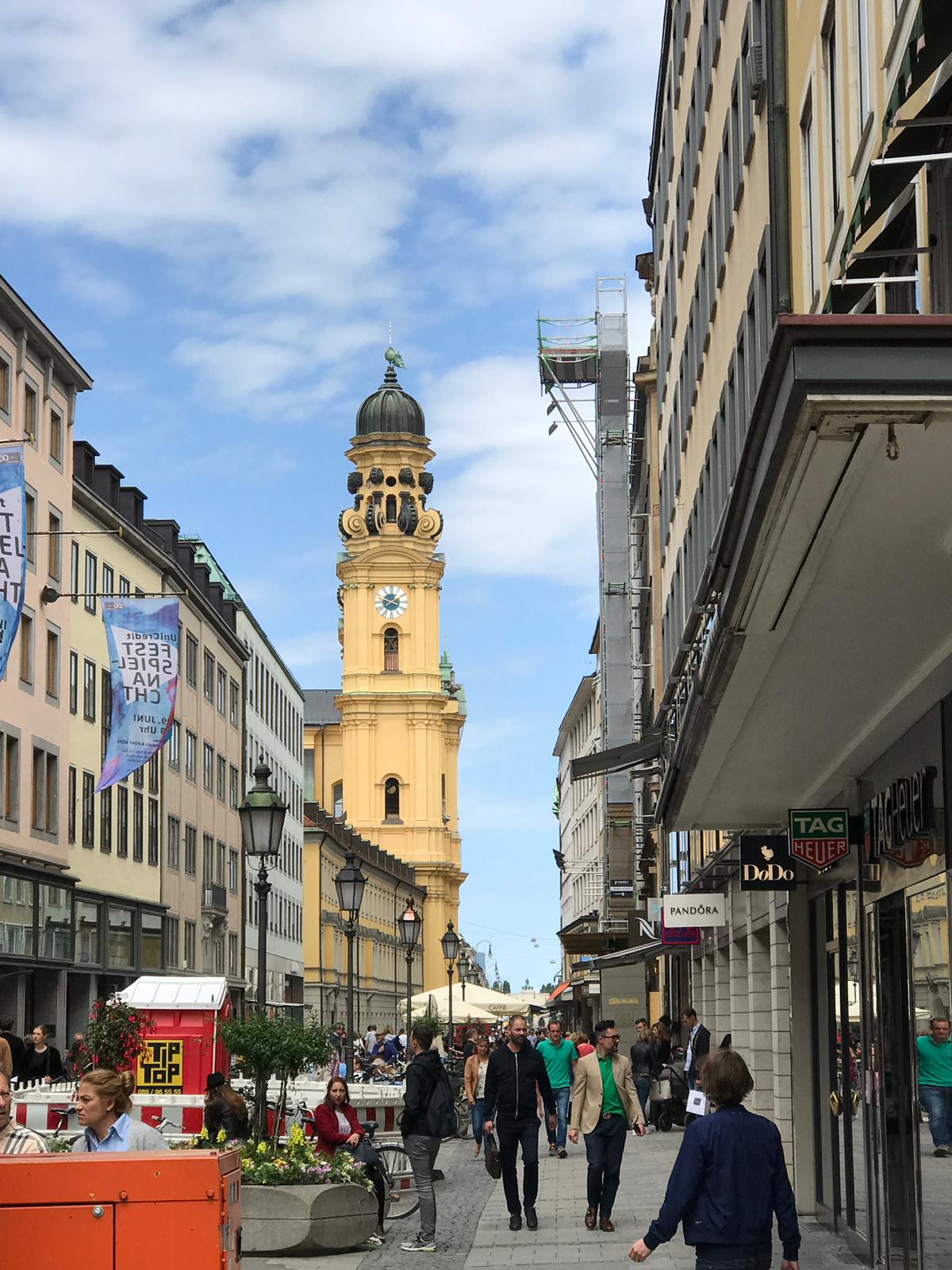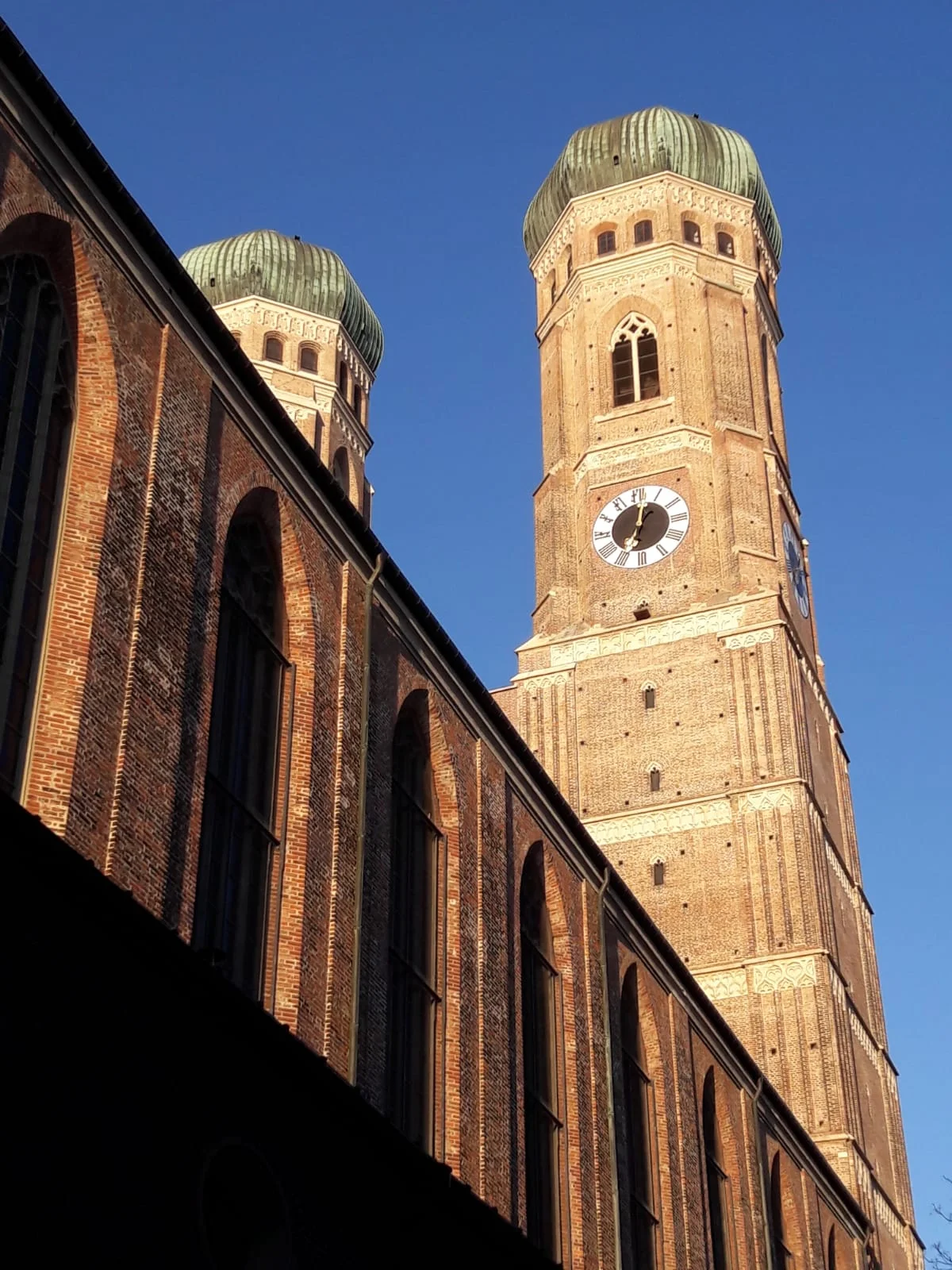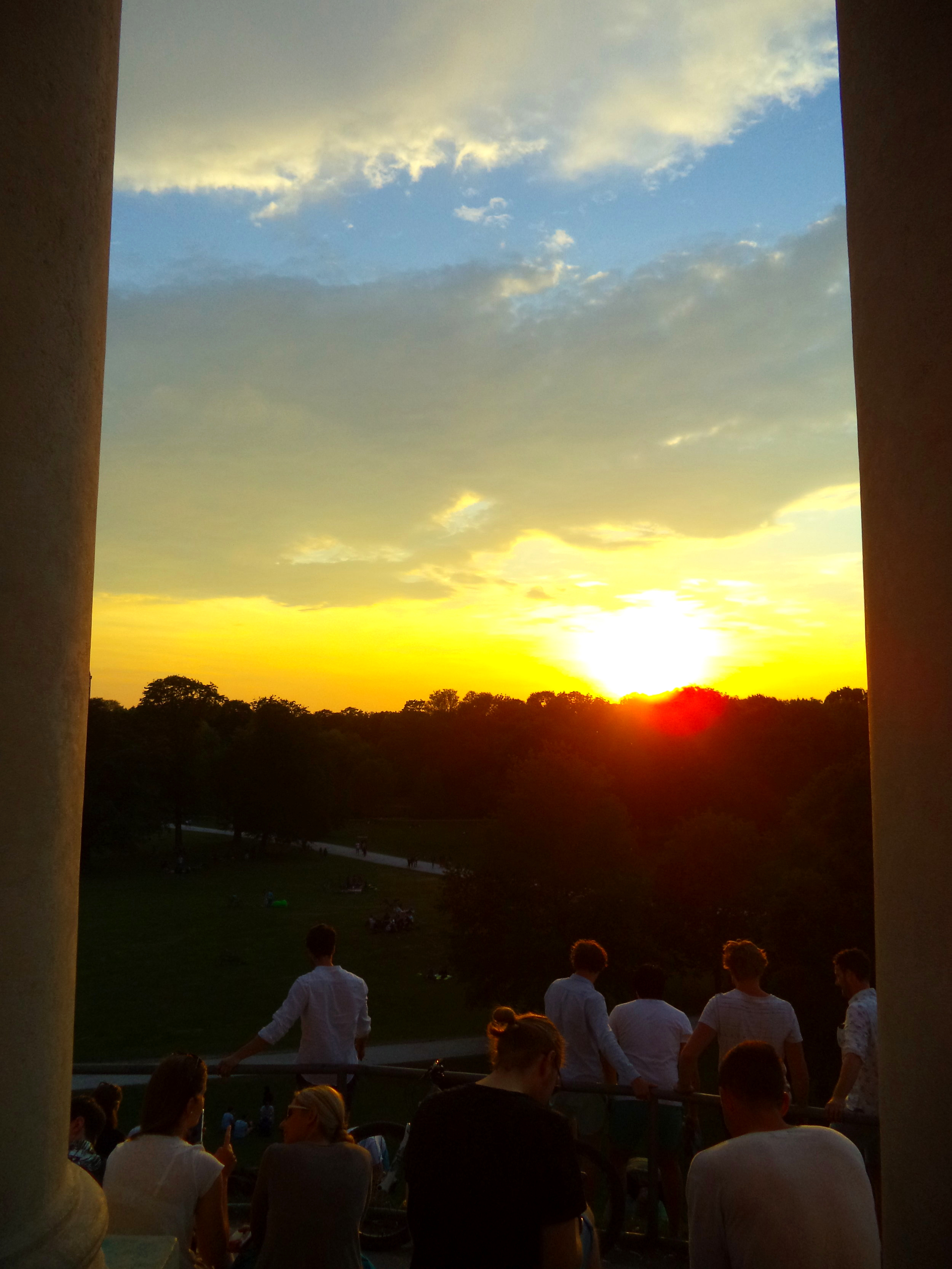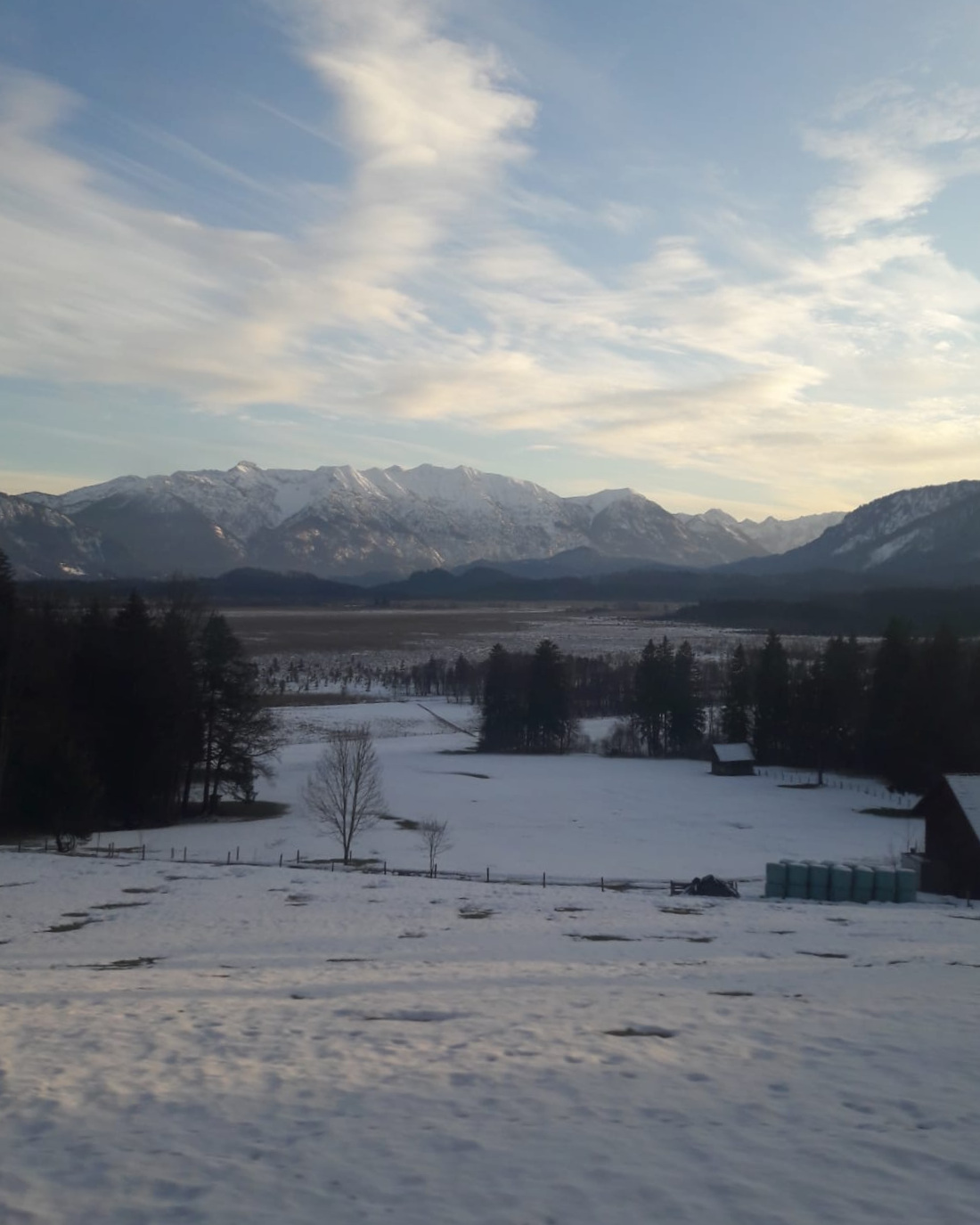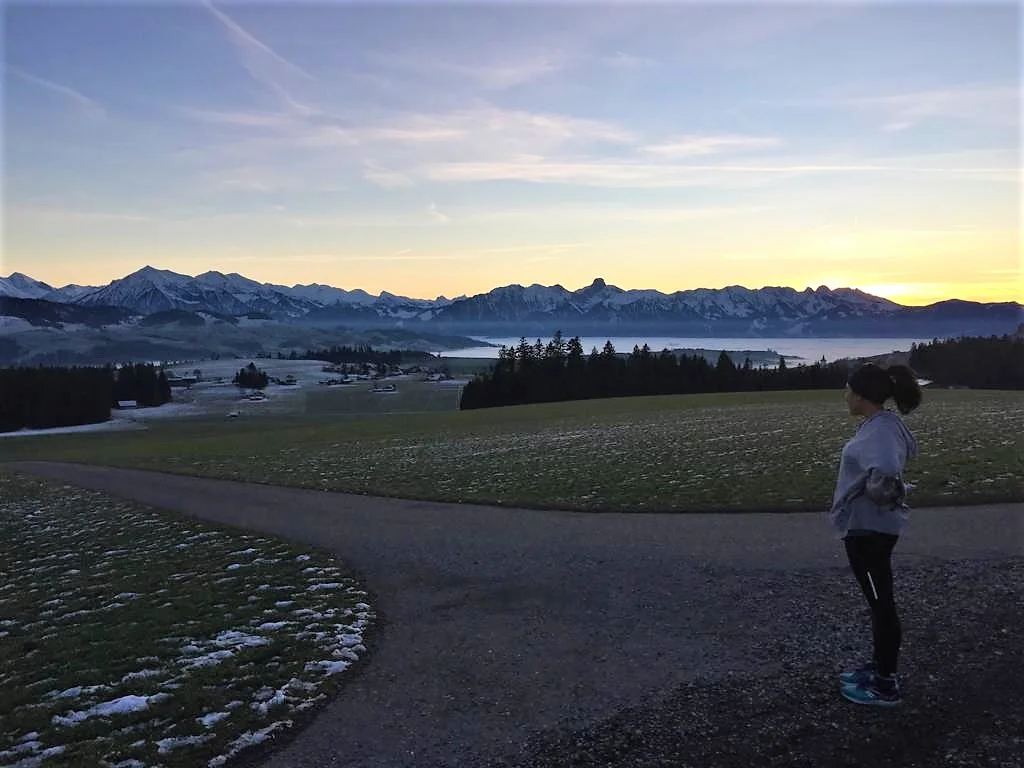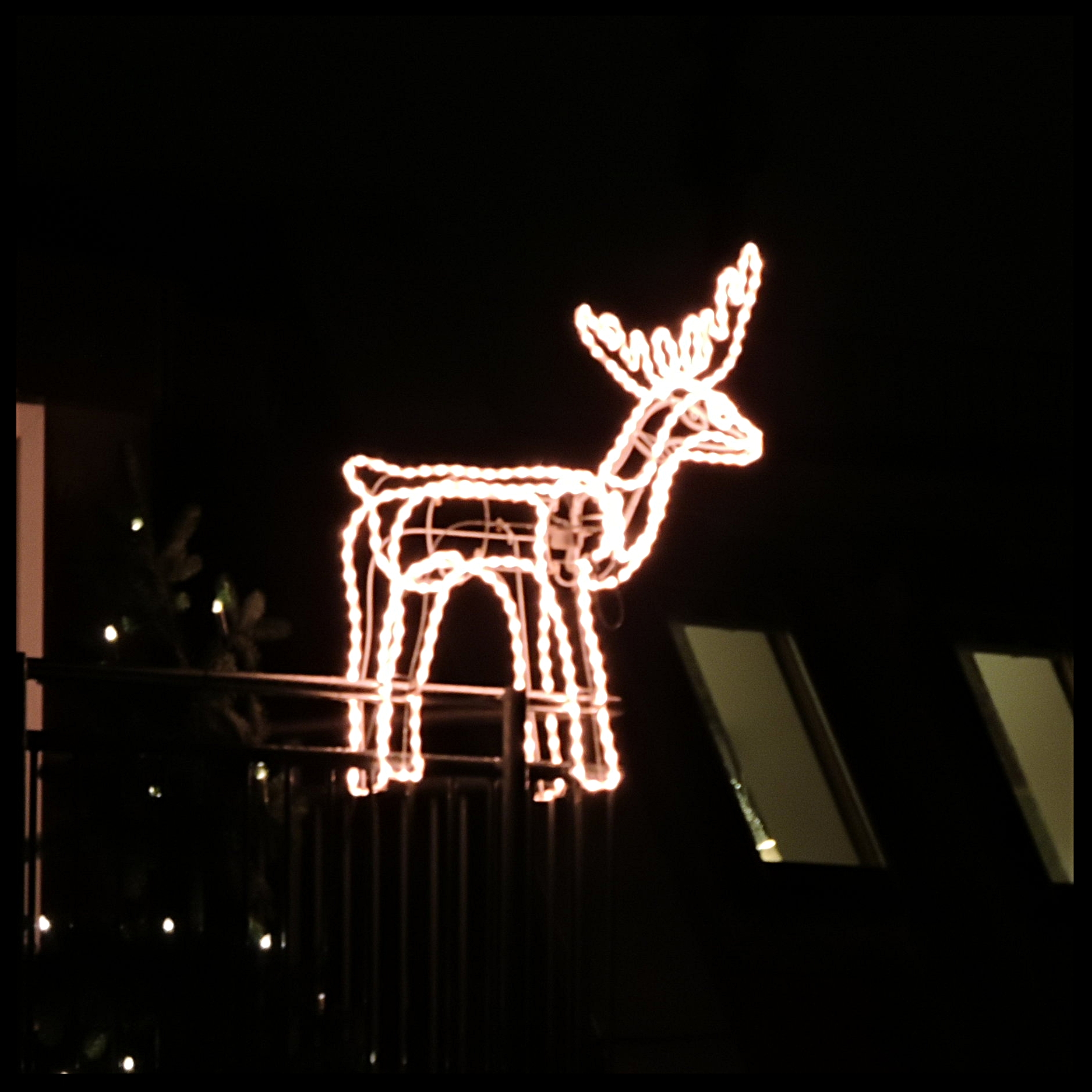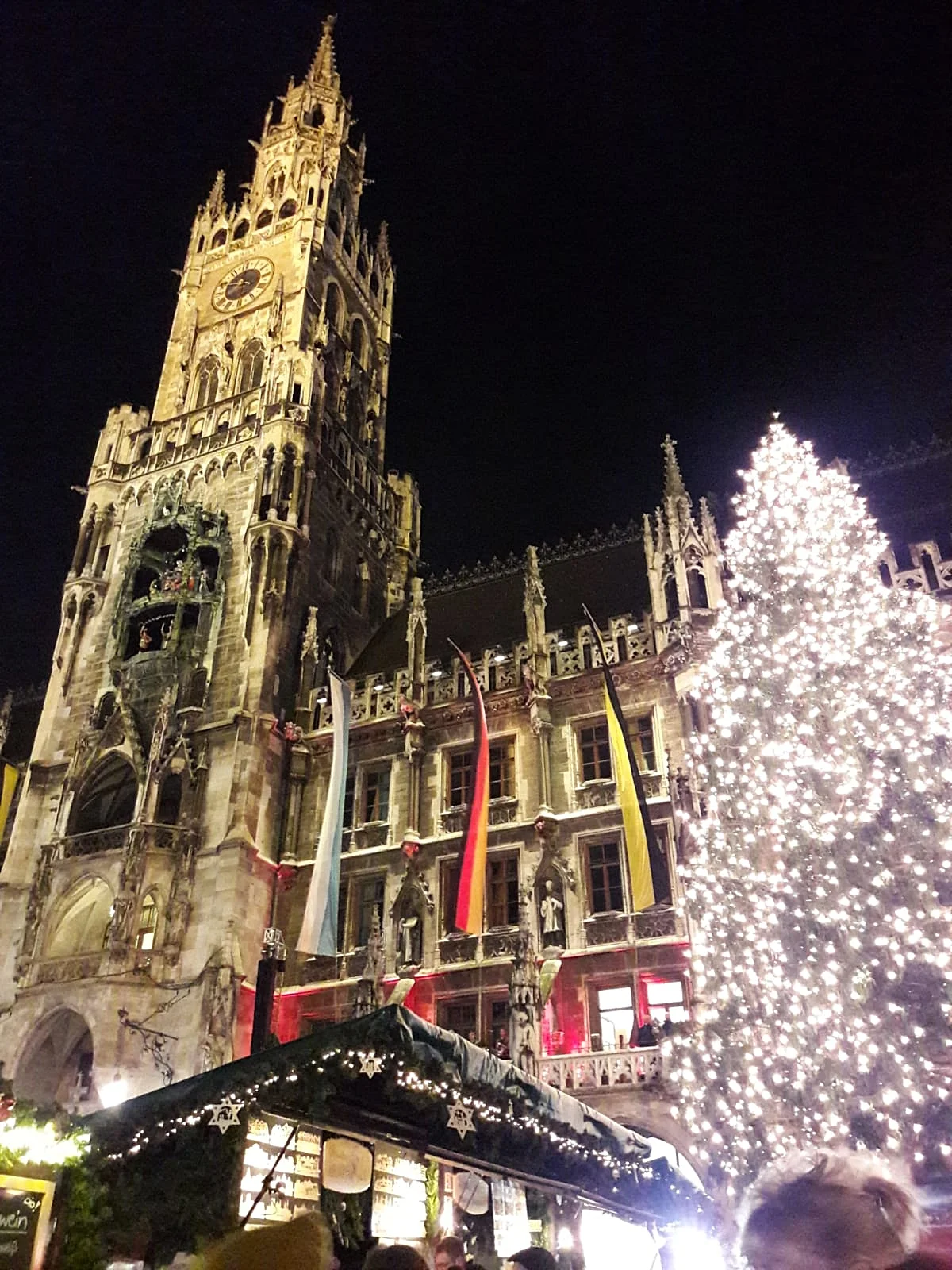Life imitating Art
/I have an unfortunate habit of living a lot of my life in split screen. I may be boarding the bus but in actual fact I am elsewhere, sat at my head cinema, watching a movie about how my life should ideally be playing out. Forget the bus, which I’ve been waiting for three minutes in the blistering cold for, in my mind I am slipping into my own Himmobile in which the seat warmers are already on. This dimorphic visualisation is probably an unfortunate consequence of watching too many films in which this technique has been used.
Coming to Munich worsened this tendency as I had many expectations of living in continental Europe, again as a result of pop culture. I imagined I would be swirling around the city in A-line skirts à la Audrey Hepburn in Roman Holiday. The only problem with this is that a) moving to a place means that it no longer qualifies as a holiday and b) I own no A-line skirts. Living as opposed to holidaying somewhere necessitates the mundane realities that make existence possible e.g. working, shopping and getting the damn bus.
More often than not grand plans to visit every cocktail bar in the Zagat Guide to Munich are quickly abandoned after a long day at work. The fatal step is to actually go home before going out as more often than not the lure of pyjamas and central heating kill any such aspirations. “I’ll do it next week,” has become my go to phrase, whenever Philippe suggests somewhere we could visit on a work night, his expression mirroring that of a puppy that has been denied a walk too long. The gap between my expectations and reality is entirely down to me, and that insight has allowed me to actively fight my bone idleness. Another motivating factor is the fact that I am cheap.
Once a month the Haus der Kunst, a giant contemporary art museum in the centre of Munich, opens its doors to the public for free. I know this because I have a book called 101 Free Things to do in Munich, which I bought when I first became aware of just how costly Germany’s most expensive city was. For some time now something in my schedule has always clashed with the first Thursday of the month, when this open evening occurs and as such, I have not been able to visit the Haus der Kunst. Of course, I could go any other time for 14 € but for some reason making a visit on the evening of free entry has become a small obsession of mine.
Ignoring the tics in my mental health, last Thursday happened to be the first Thursday of the month and the stars finally aligned in that my calendar was completely blank. Finally I was free to visit the Haus der Kunst. There were obstacles to be overcome, however.
I was tired.
It sounds pathetic but as the working week wears on I feel older. I may begin the week as a 30-something year old, but by Friday I am ready for a retirement home. My bones ache and my head is muzzy, most likely the result of cumulative sleep deprivation. Thursday is the worst day of the week to go out a-visiting, given that the next day is still a work day with no chance of a lie-in unlike Friday.
“Shall we just do it next time?” I asked Philippe, paraphrasing the familiar excuse and literally dragging my feet.
Philippe looked at me incredulously and pushed me on.
The Haus der Kunst loomed ahead of us. There is nowhere in Munich quite like it. Residual from the Second World War, the Haus der Kunst was built by the Nazis as a place to display National Socialist approved-art. As such the building is in the style desired by the Nazis: imposing, symmetrical and stark. Columns dissect the entire length of the building, giving the appearance of a deterring grill over the museum. The style echoes the blocky dominance of the Reichsbank of Berlin and the Zeppelinfeld in Nuremberg, however, in this case the proportions seem off. Spanning almost the entire southern border of the Englischer Garten, the Haus der Kunst’s gargantuan length cannot be matched by its height. Truth be told, the building seems a bit squashed.
Internally, however, the building undergoes a Mary Poppinseque transformation and opens into a giant exhibition space, seemingly bigger on the inside than on the outside. The original architectural designs have been cleverly reconfigured to create separate rooms and levels more akin to the thought-provoking layouts of modern art museums. This is undoubtedly in rebuttal to the original restrictive concept of the museum by the Nazis, a repudiation that is further emphasised in the contemporary art the Haus der Kunst now displays.
As I walked up the steps to the entrance of the museum my split screen existence converged into one vivid experience as reality caught up with expectation. Thronging the halls of the Haus der Kunst were a crowd of cliches: wealthy benefactors in sharp suits pressed past grungy arts students with nose piercings and heavy eyeliner. Everyone seemed to be keeping one eye on the art in front of them and the other on the characters in the room, sizing up the competition in terms of their money or the daring of their outfits, whichever was more important to the individual. If asked to envisage an art exhibition, this is exactly what I would picture.
The reason for the heightened atmosphere? Unbeknownst to us, a new exhibit of Ghanaian sculptor, El Anatsui, was about to debut. Being cheap had paid off and we found ourselves at the opening night along with the great and the good of the Munich arts scene in the colossal rooms of the Haus der Kunst, which were incidentally the perfect place to display El Anatsui’s work. These sculptures are actually made from repurposed metal, often myriad bottle tops, which have been strung together to form large swathes with the appearance of cloth. Making full use of the height of the halls, the sculptures cascade from the walls in warped revolutions or hang suspended from the ceiling, such as in El Anatsui’s centrepiece “Logoligi Logarithm,” a series of net-like structures made from bottle rings, that one can walk through.
As with any effective exhibition a combination of the art and the atmosphere piqued the senses. It was one of those very rare instances when life, art and imagination coalesced into one with no need for imitation. It was an extraordinary event that I could have easily missed out on, had I let the laziness of the quotidian win. It turns out my teachers were wrong. Sometimes it pays to go out on a school night.



